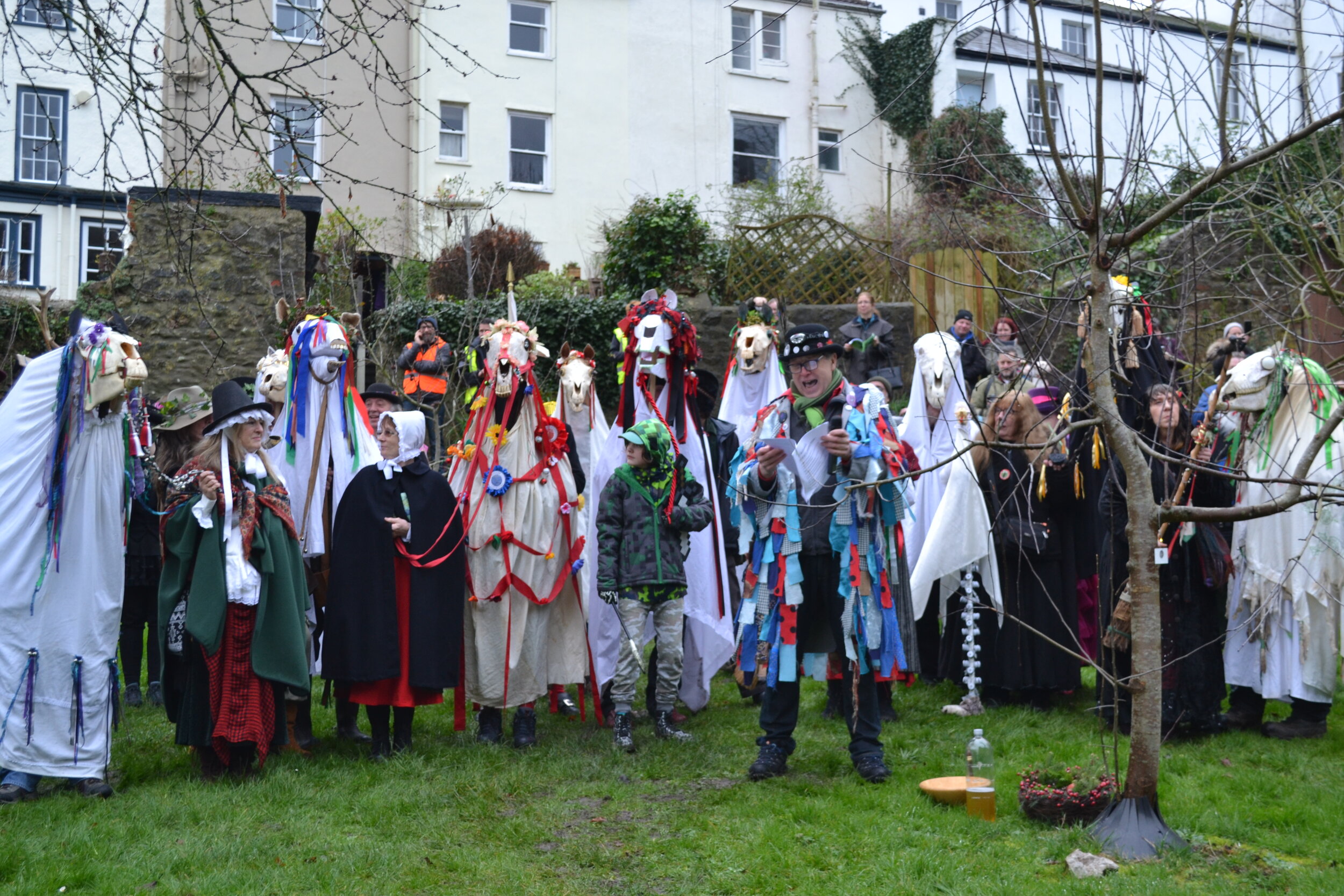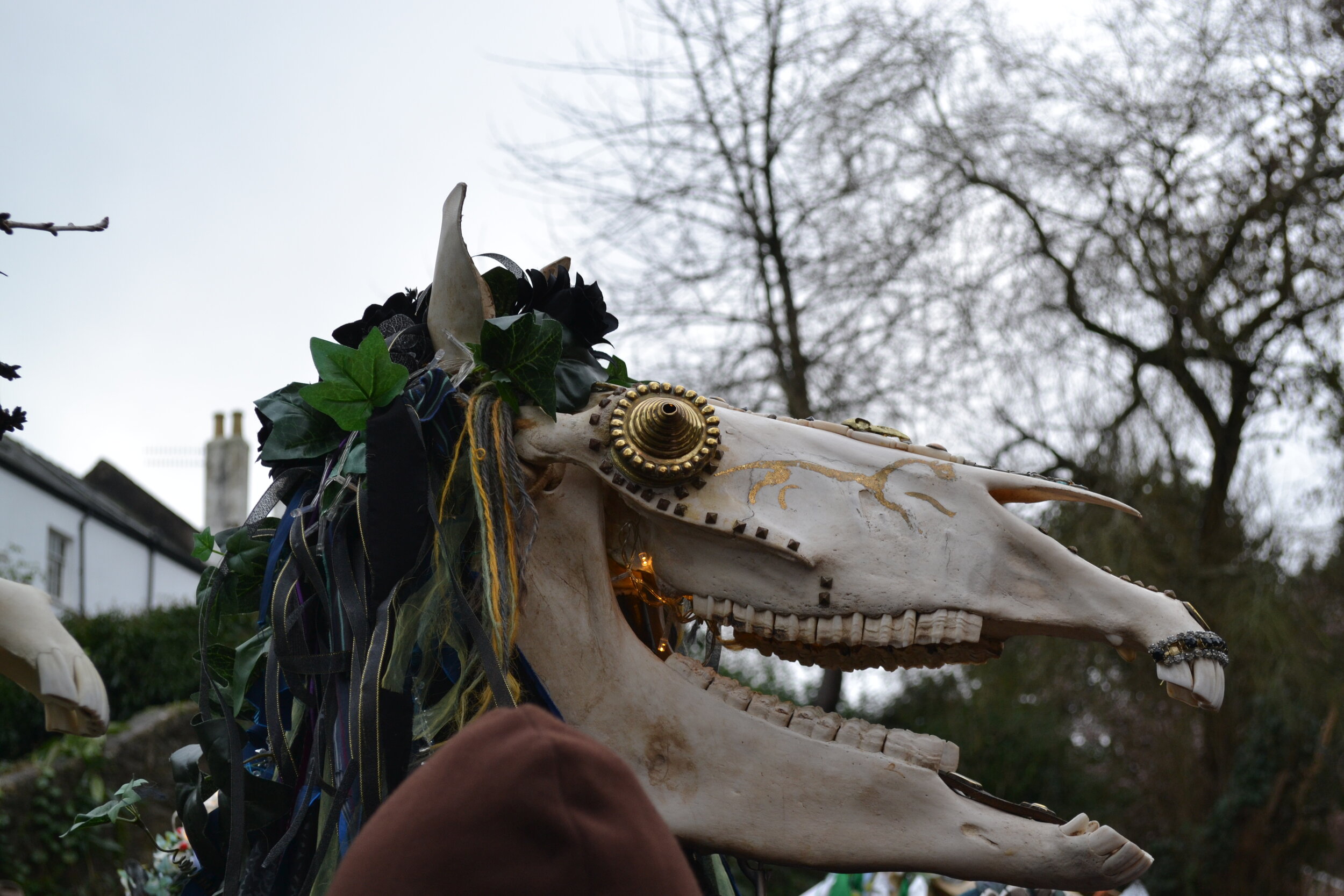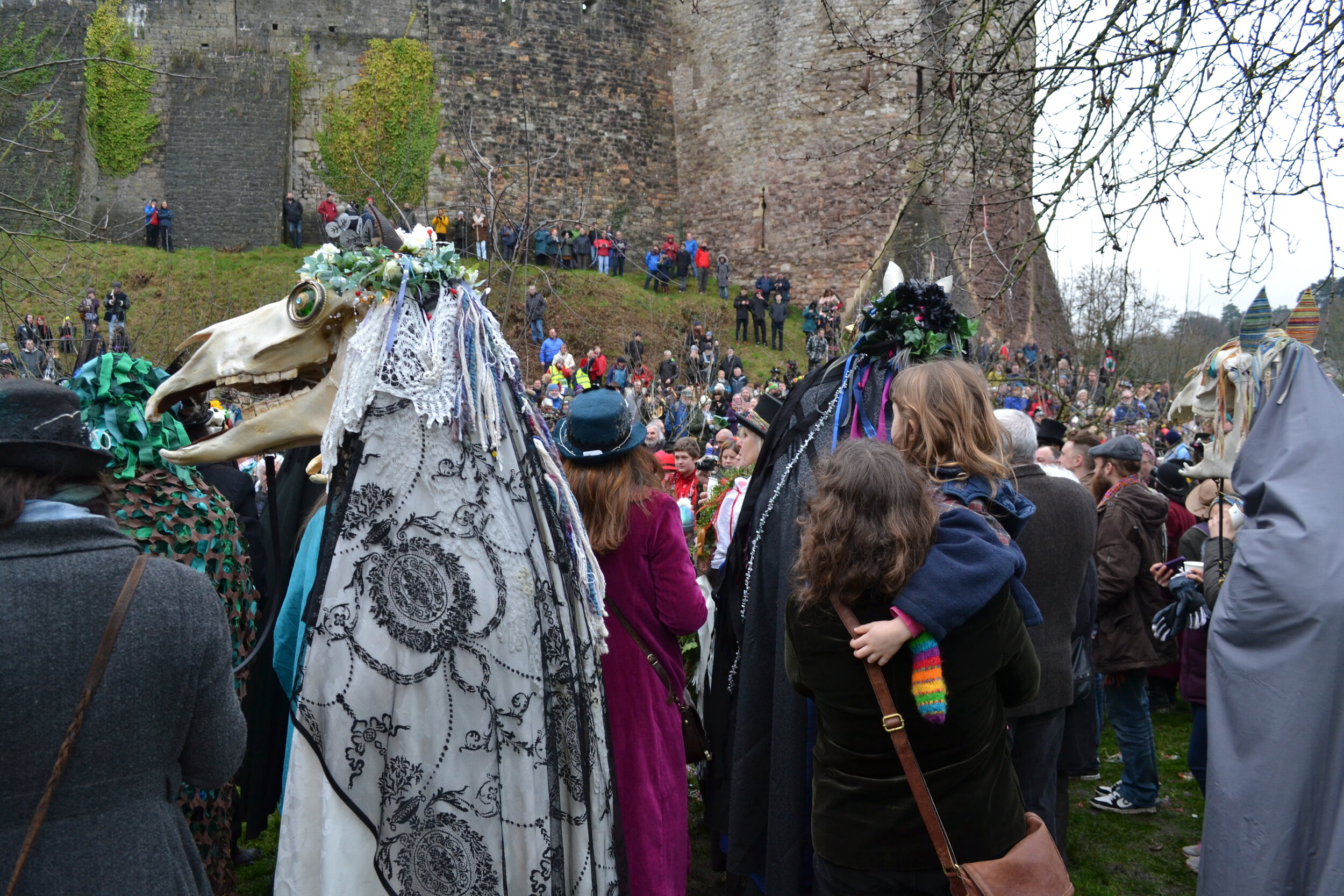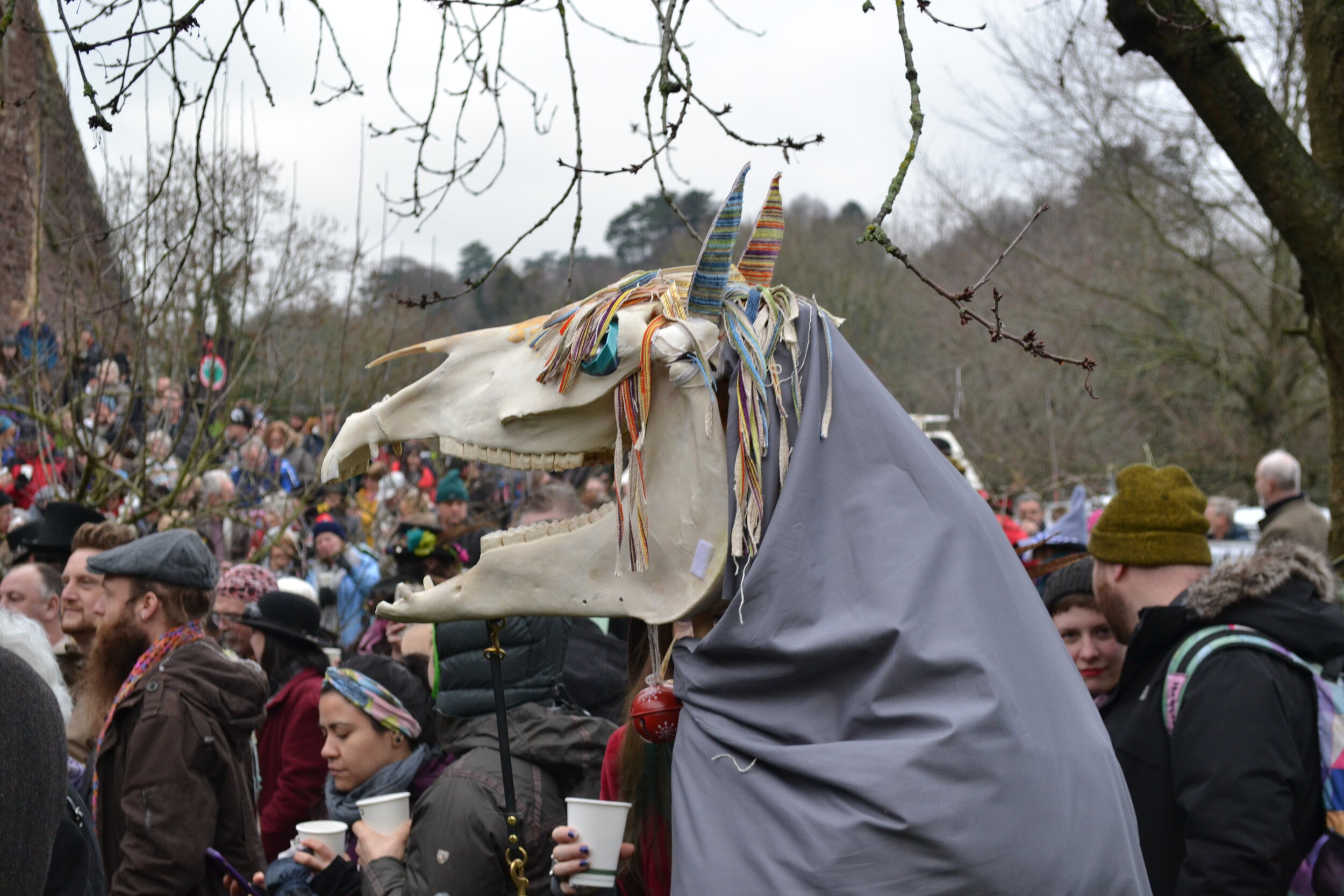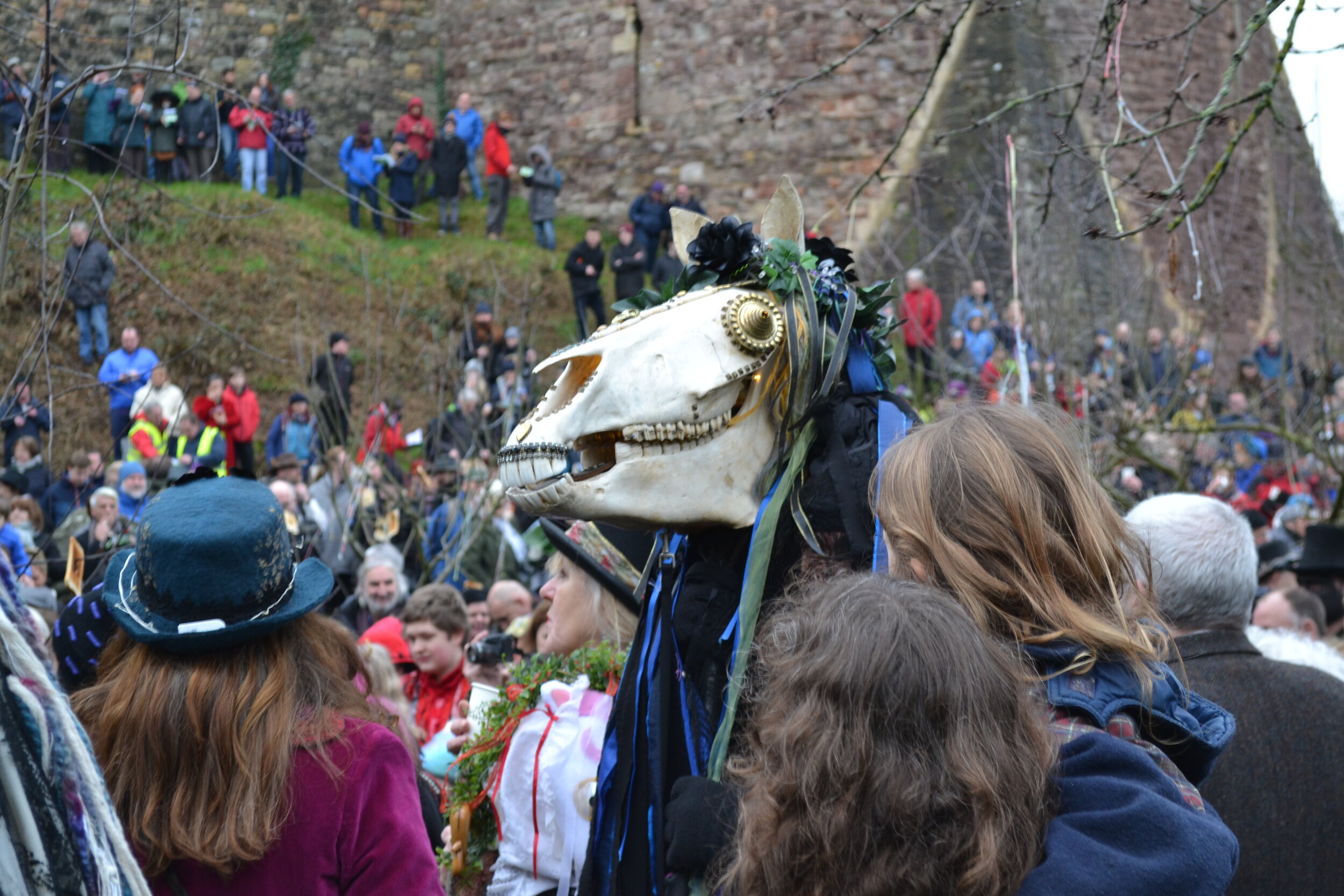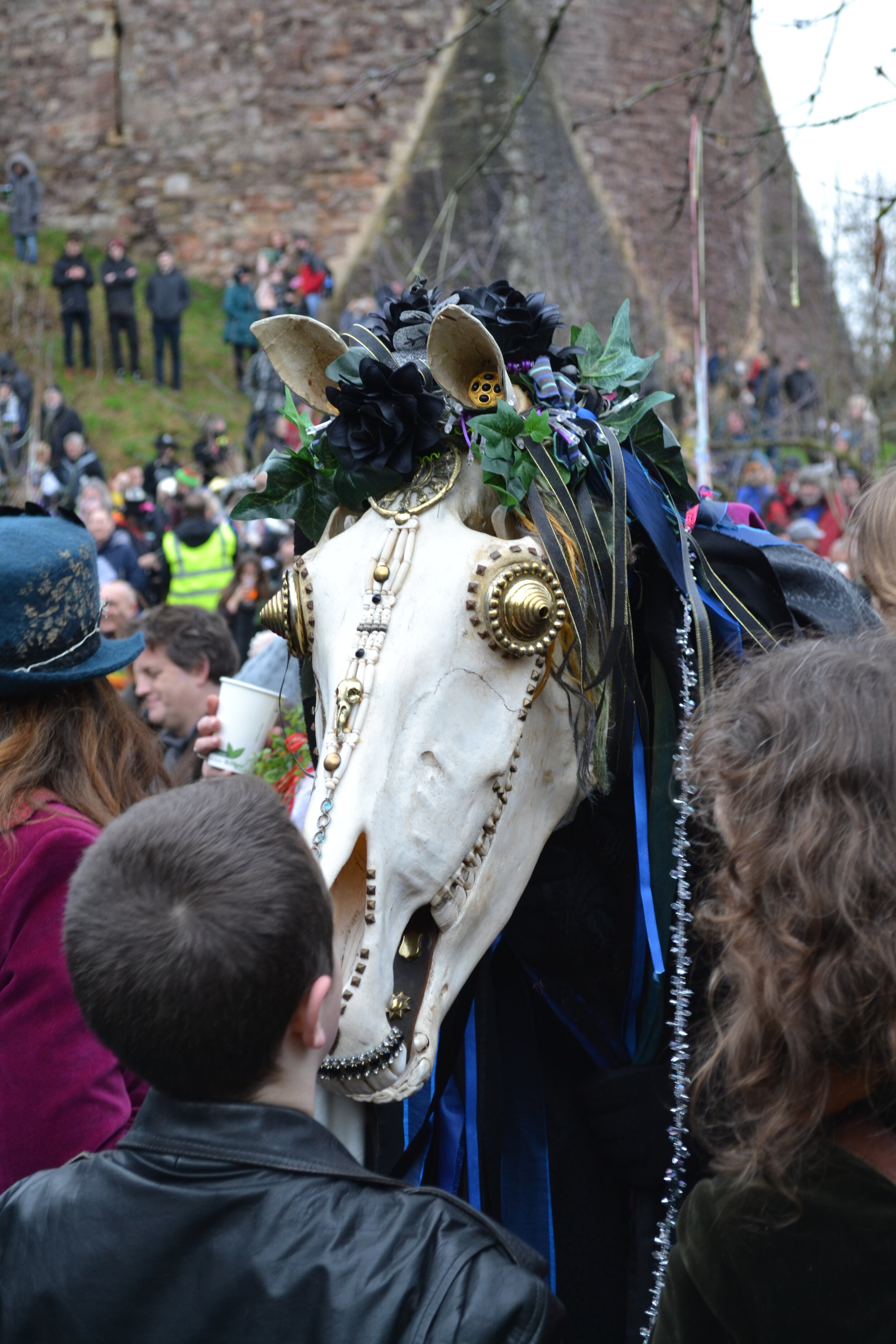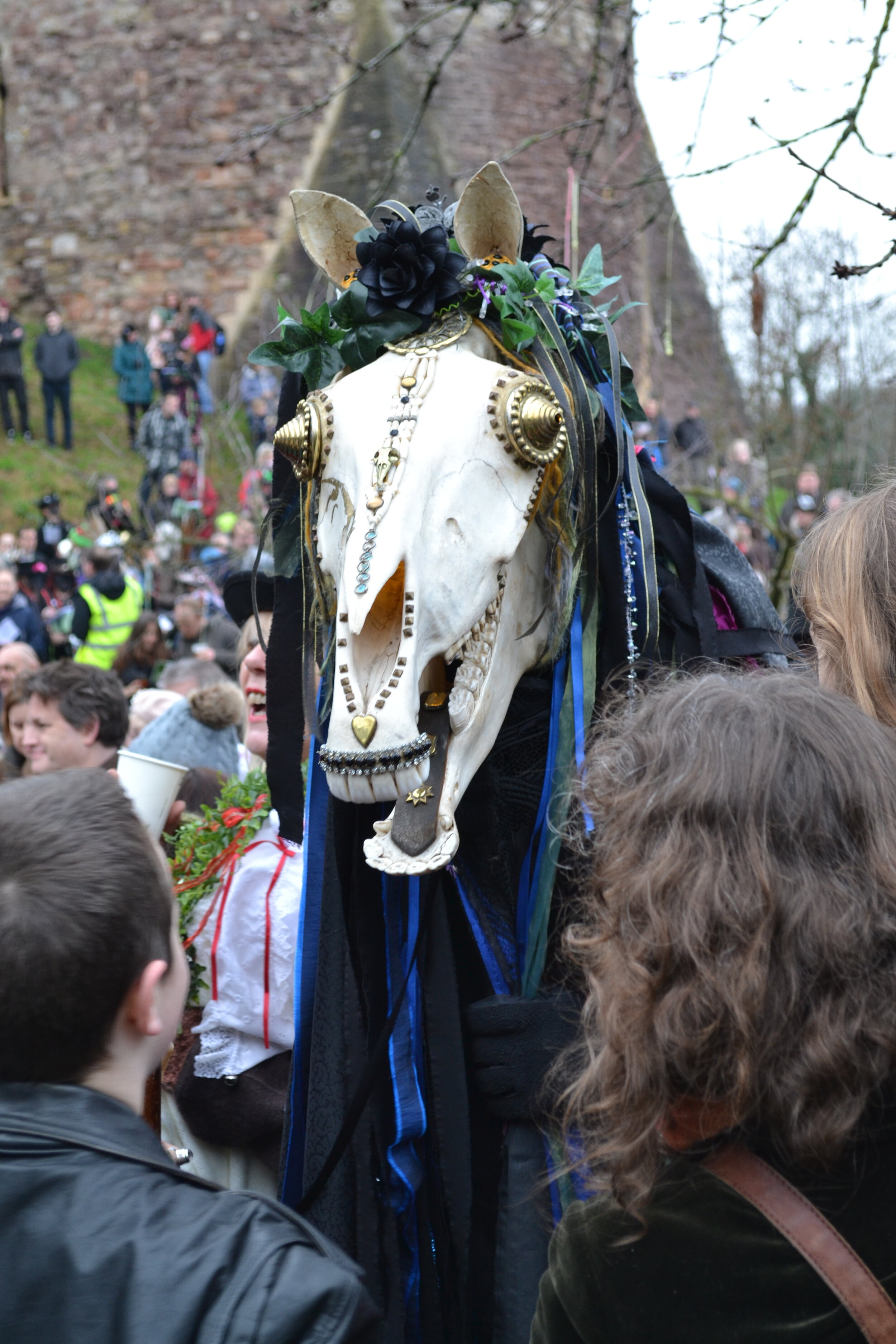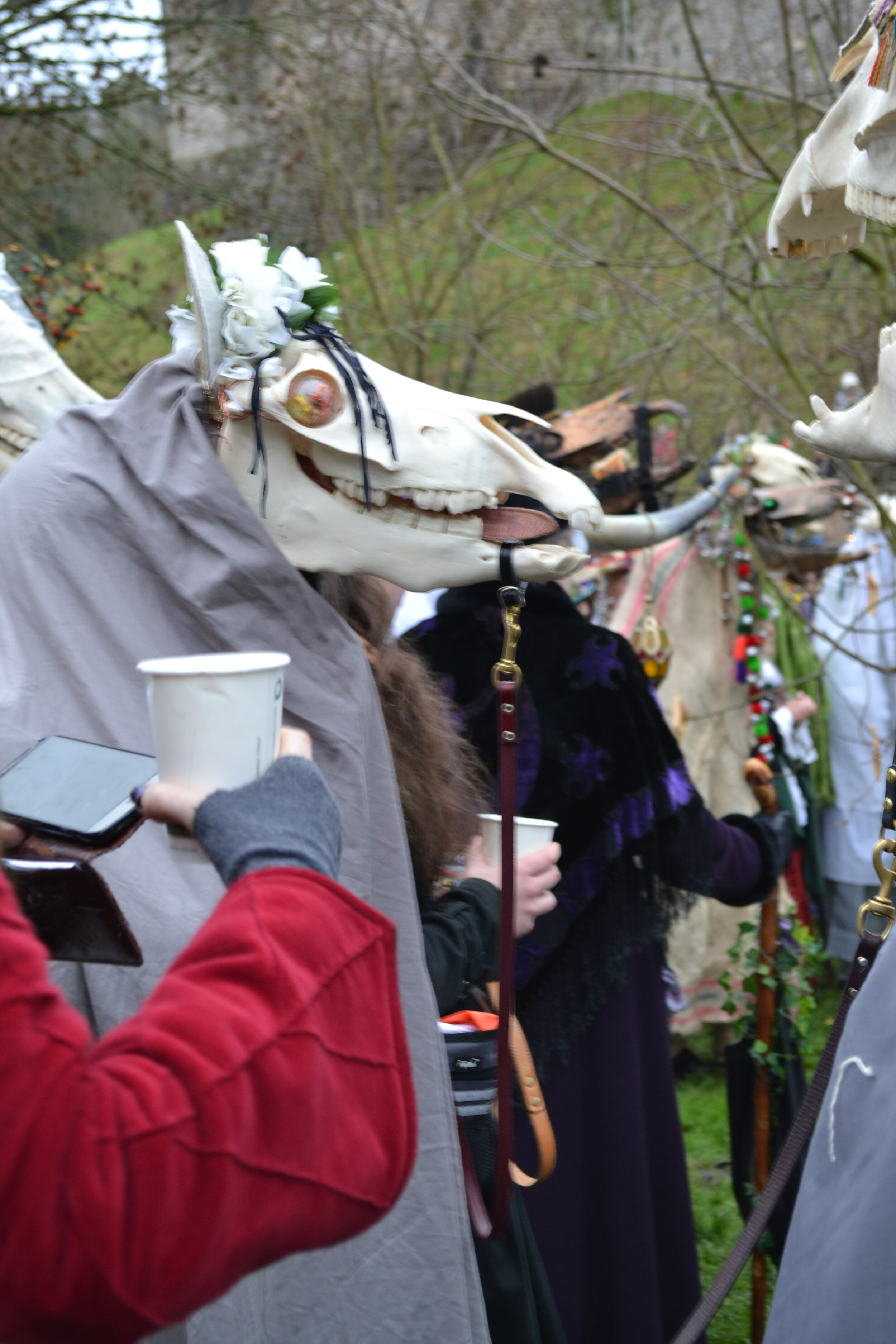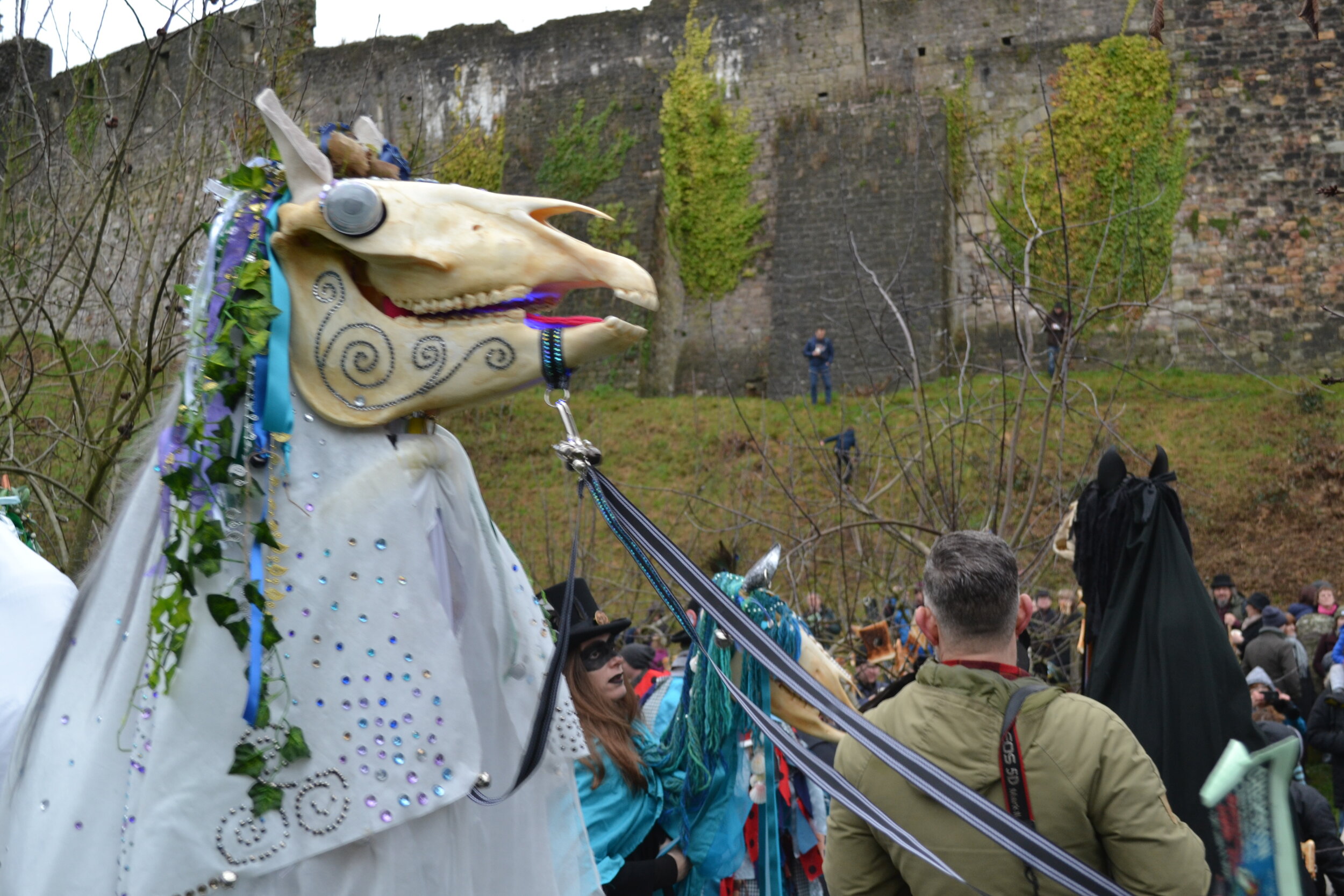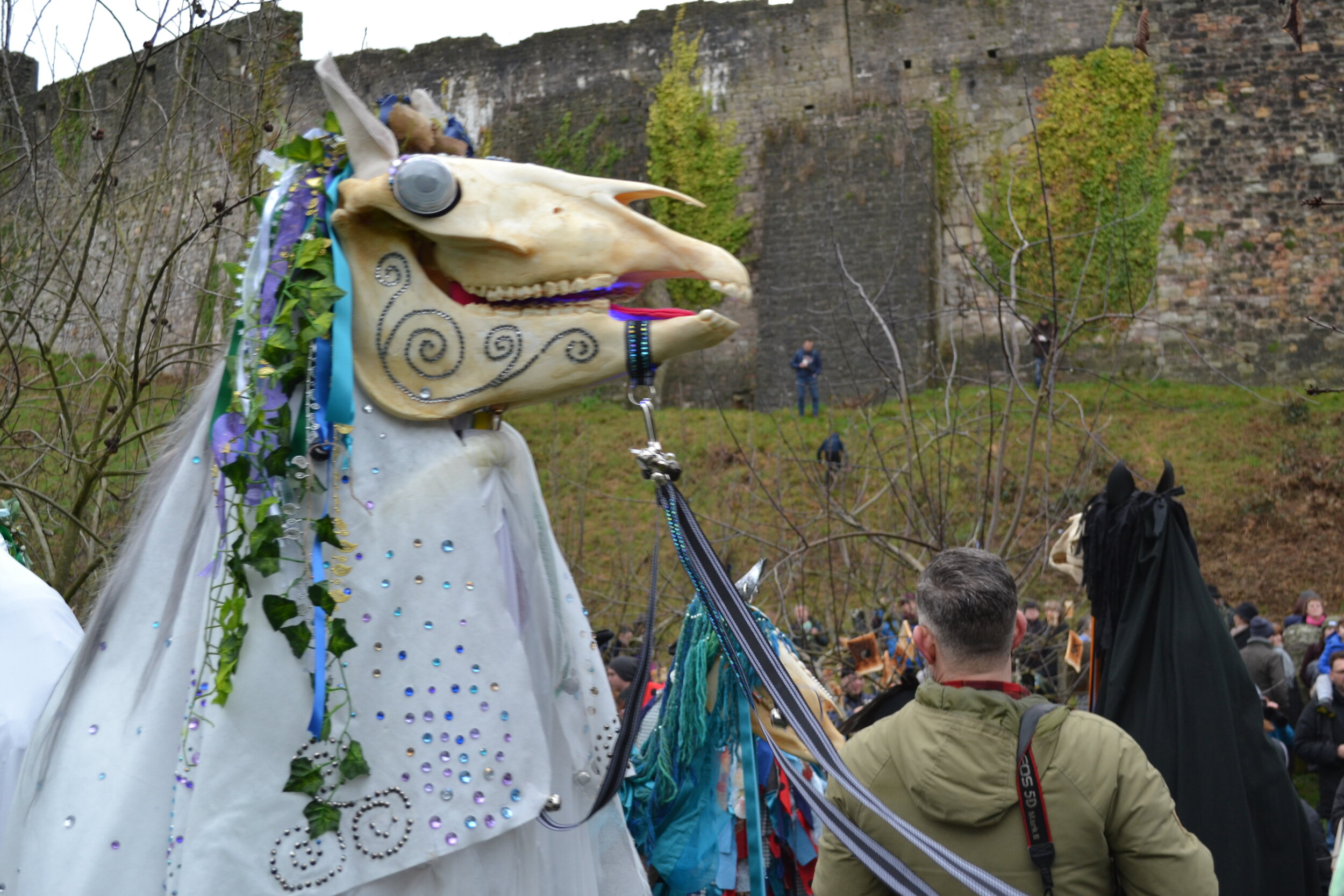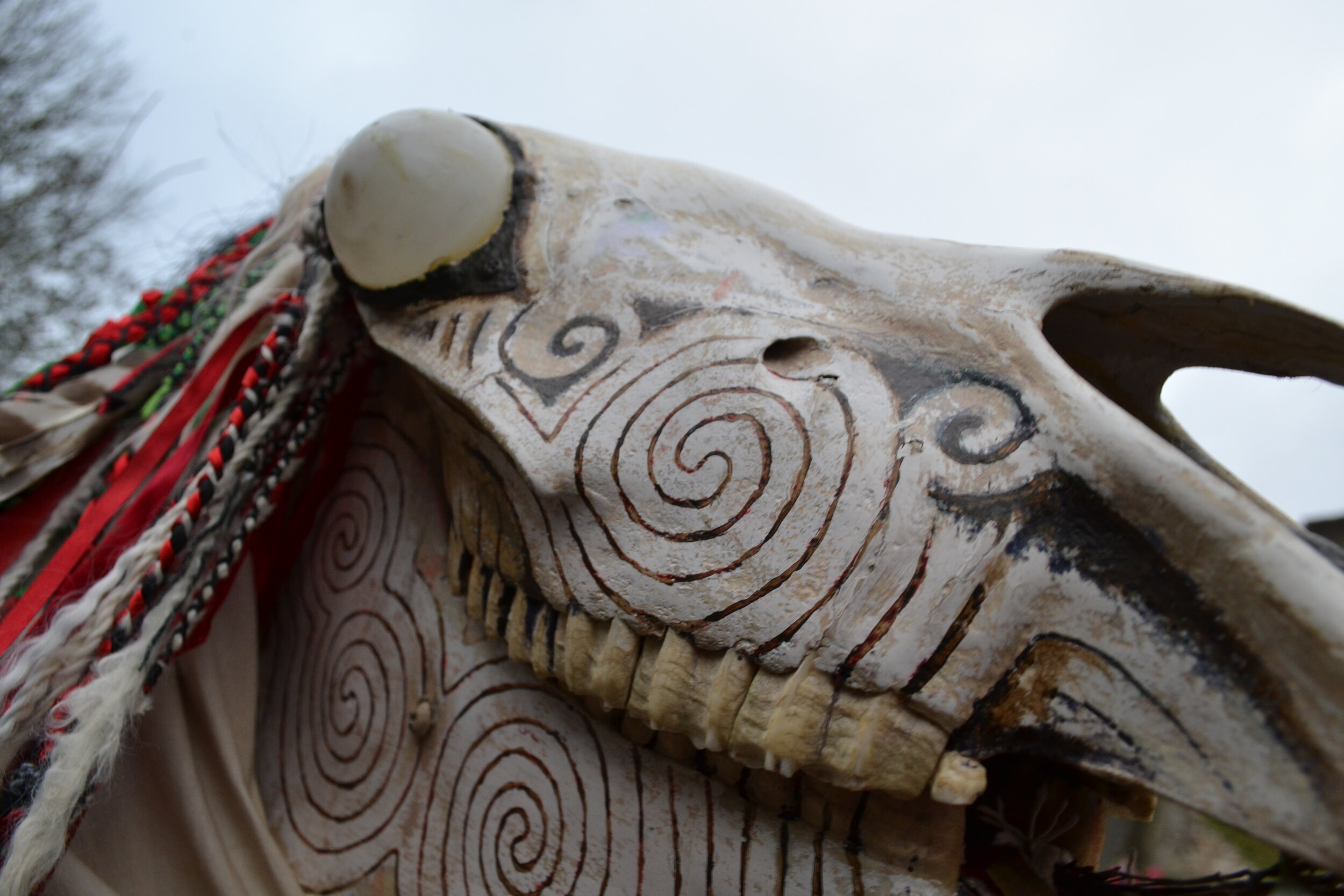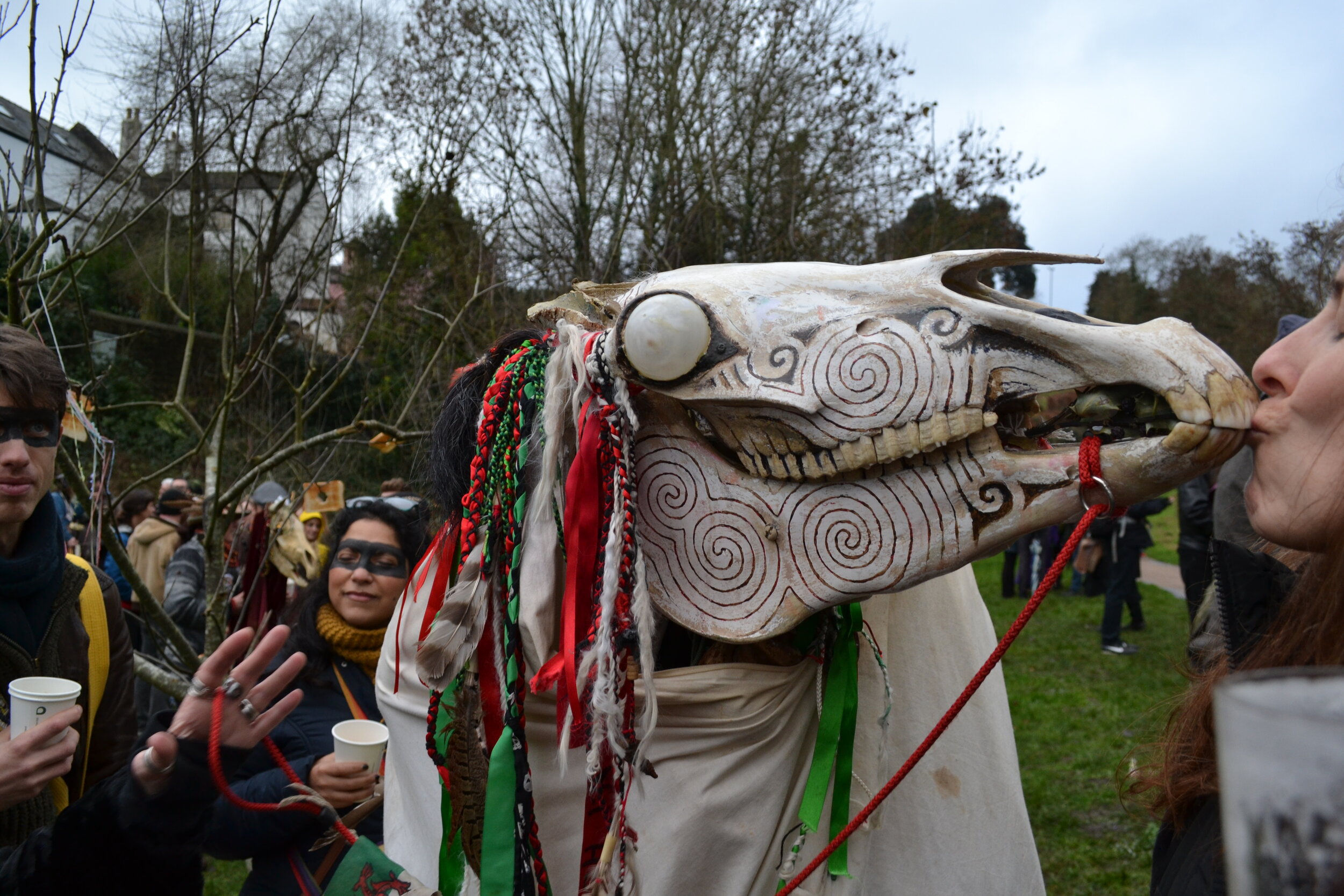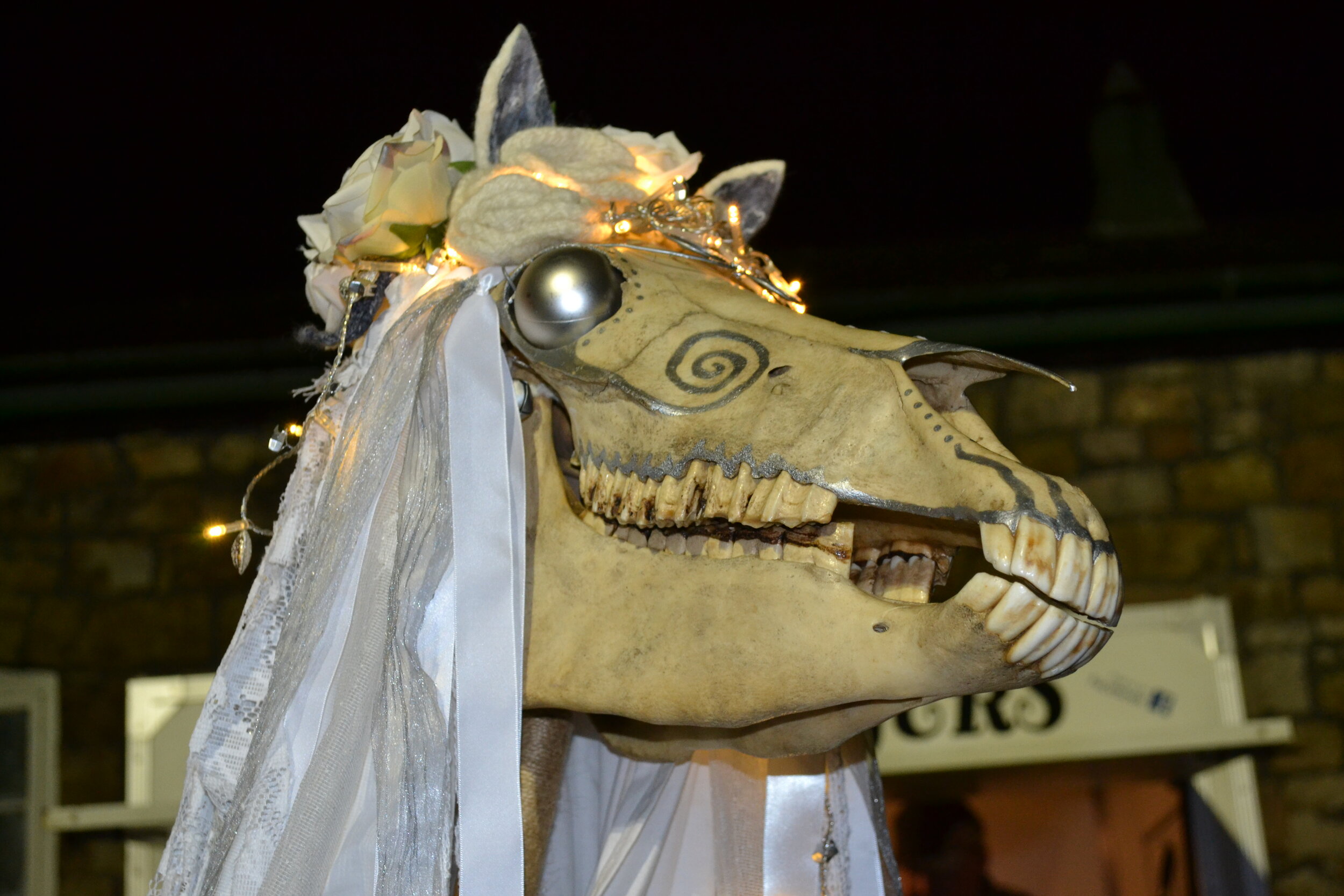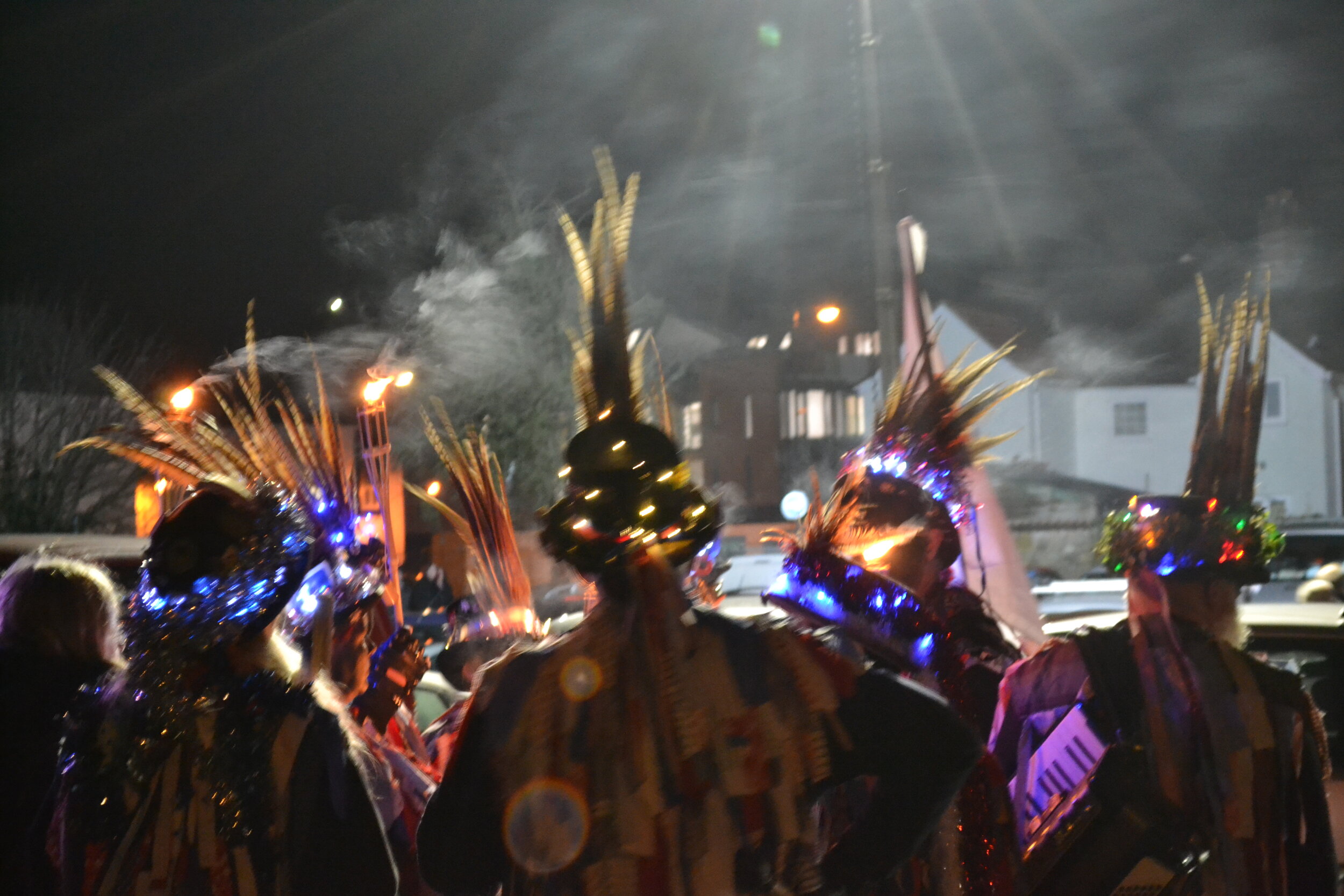When dead horses come calling (to wish you good luck).
When dead horses come calling
The Mari Lwyd history and tradition: Chepstow 2019:
Picture: Brecon Beacon Mari Lwyd.
Sarah Keen - Enchanted England.
“Can you please tell me”, an English woman asked me in a plaintive tone as I tried to work out what exactly the car parking machine required in order for it to release a ticket. Its instructions so swathed in mystery as to be more baffling that the current beings thronging its spaces. “Can you please tell me, what exactly is going on? “
I looked up across the parking space which seethed with highly decorated horses skulls mounted on sticks. I opened my mouth, closed my mouth and finally said, “ I am afraid I can’t”, and referred her to the tourist office. “I am only here for the walking”, she said plaintively before she disappeared into a throng made up of frantic figures. There was Herne the hunter, an ‘obby ‘oss and the fantastical chattering jaws of an Y Fari-Lwyd. It’s all very odd.
IT IS OLD Twelfth Night: Chepstow. 2019. Chepstow, professional, quiet, charming and discreet. But this is the last old day and last old night of a vanishing year. Time’s great gates fly open and the dead horses of the Y Fari Lwyd gallop out of their mysterious past and into the present streets of Chepstow where they collide with a glorious medley of Morris Men and Wassailers.
The Y Fari-Lwyd (Welsh) or Mari Lwyd (English variant)is a creature of nightmare. The name translates to the Grey Mare, although there have been attempts to link this name with the Blessed Mary, as we shall see later. The original Mari Lwyds were made from a horses head that had been buried in quick lime. After a suitable time they were dug up, cleaned and the jaws hinged with wire. The life-like movement of the jaw adds to the credibility of these incredible beings. The skulls are richly decorated. Although it is possible to get plastic replica kits nowadays, the bone Mari Lwyds have a haunting connection with the underworld that is impossible to shake off once seen.
Once picked clean and articulated the Mari Lwyd would be decorated with pagan symbols such as the Celtic spiral. One of the finest examples at Chepstow, the Mari Lwyd Larcher, has mistletoe and holly in its mouth and a carved bird sits in the nasal cavity. Generally, the eye sockets are set with rich green bottle-glass and often rimmed with metals or painted decoration. The heads are mounted on a stick that is covered by a white shroud. A man creeps in under the stick and takes on the role of Mari Lwyd. The shrouds too are richly decorated. Each Mari Lwyd should be attended by an Hostler or - I suggest Ostler. the ‘ostler leads the Mari Lwyd on a rein around pubs and houses where they sing demanding entrance. The people within the buildings would sing back to keep them out.
The song battle is traditionally known as Pwnco. Finally the horse and its master out-sings the household and they are let in to receive drink and cakes. In return the Mari-Lwyd brings blessing and luck to the people for the following year. The Mari-Lwyds are always boisterous, mischievous and demanding. The ‘ostler has his work cut out to keep them under control at times.
The Mari-Lwyd Larcher skull was found in a wood - where it had been on a stick for at least five years. From whence this horse came nobody can tell. Its skull was covered in mould and moss. It was as green as a leaf. Over time this skull was transformed into a Mari Lwyd always and only associated with the New Year. The Mari Lwyd Larcher never comes out after January. She is tied to Winter and the fore-coming spring wassail celebrations.
A second Mari-Lwyd was found on the Brecon Beacons. I saw ribs glistening, said its current ‘ostler, and found the head. The Brecon Beacon Mari Lwyd also has traditional decorations and white coverings. There is more than a suggestion from the ‘Ostlers that these horse skulls are choosing to be found. This is why, personally, I think the modern paper or plastic Mari Lwyds never have the same impact for all their theatrical vim. In the traditional versions there is a complex relationship taking place between the past living horse, its skull and the people who animate it.
Looking at these creatures arising straight out of legend, it is impossible to ignore the connections with the horse and the ancient Celtic horse-worship that was once widespread throughout the British Isles. Our countryside is dotted with horses carved into chalk highlands. In the Welsh folk cycle, Mabinogion, the mysterious Rhiannon appears on a White Horse before the hero Pwyll and the story is shot through with riddling battles where the winner will gain mysterious treasures, food and drink. Shirley Collins in her version of Nottamun Town, that references riddles and magic, sings of a grey mare:
I rode a grey horse, a mule roany mare
Grey mane and grey tail, a green stripe down her back
Grey mane and grey tail, a green stripe down her back
There wasn't a hair on her
Be-what was coal black
[Verse 2]
She stood so still, she threw me to the dirt
She bruised my heart and bruised my shirt
From stirrup to saddle I mounted again
And on my ten toes I rode over the plain
In England and Scotland there is a tradition of the Toadmen. Some ploughmen and wagoners were said to be part of a secret society that had a peculiar affinity with horses. They could calm a wild one or cause a tame one to rage so that no one could harness it. In Scotland this became known as the Horseman’s Word. Either way they had to find a particular bone in a toad’s body that would grant them this power. This bone was also required to be bleached and picked dry over time.
The pagan Mari Lwyds appear at the time when winter is dying and spring is coming. Their link to Wassail suggests the horses were associated with fertility and good luck. They are both otherworldly and yet helpful to this one.
The idea that the Mari Lwyds are the Blessed Mary - celebrating an early Christian feast on February 1st (the feast of the Virgin Mary) seems a little more problematic.
In the 1830s a splenetic Rev. William Roberts was made a Baptist Minister in Blaenau Gwent where he found the tradition of the Mari Lwyd alive and kicking. It filled him with rage. He sent the young people to chapel and Eisteddfods rather than let them take part. His ire seemed to be from a realisation that this was not just a pagan fete but worse! This was an old Roman Catholic ceremony that had been practised for centuries. It seems likely that the early church seized on the name Mari to make a fraudulent claim to the Virgin Mary. The Christian version of the tale holds that a horse was turned out of the nativity stable to make way for our sacred mother and divine child. This horse was condemned to wander through the world looking for a place to rest its head for ever. A charming tale - but from my point of view, once you have seen a full on Mari Lwyd, this Christian spin is the the last thing that rings true.
Call them what you will. The Y Fari Lwyds, the Mari Lwyds, the Grey Mares are weird to their bony little souls and I just adore them for it. Find one if you can.
Further Reading:
The Welsh Wassail Tradition The Mari Lwyd (cbladey.com)
The Magic of the Mari Lwyd Mari Lwyd (folkwales.org.uk)
Mari Lwyd Larcher The Mari Lwyd (indieshaman.co.uk)
Mabon & Gardians of Celtic Britain - Hero Mutys in the Mabinogion. Catilin Matthews ISBN -089281920-0
Videos
The Myth of the Mari Lwyd
Mari Lwyd Chepsow Video of the Chepstow Wassail
Poetry and Song
The Ballad of Mari Lwyd Microsoft Word - Watkins5_Mari_Lwyd_f.doc (literaryballadarchive.com)
Mari Lwyd, Horse of Frost, Star-horse, and White Horse of the Sea, is carried to us
Gloucester Wassail song - used in Chepstow January 2019
Wassail, Wassail all over the town!
Our bread it is white and our ale is brown~:
Our bowl is made of a sycamore tree,
So be my good fellows all - I’ll drink to thee.
All photos copyright Sarah Keen for Enchanted England.

